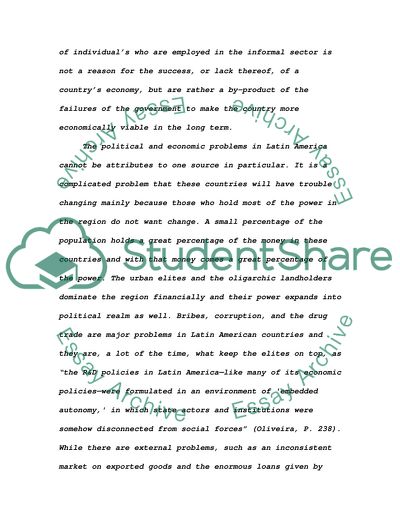Cite this document
(The Informal Sector in Latin America Term Paper, n.d.)
The Informal Sector in Latin America Term Paper. https://studentshare.org/politics/1711918-the-informal-sector-persists-in-latin-america-yet-it-is-disappearing-in-east-asia-clear-proof-that-informal-activity-is-a-brake-on-development-is-this-true
The Informal Sector in Latin America Term Paper. https://studentshare.org/politics/1711918-the-informal-sector-persists-in-latin-america-yet-it-is-disappearing-in-east-asia-clear-proof-that-informal-activity-is-a-brake-on-development-is-this-true
(The Informal Sector in Latin America Term Paper)
The Informal Sector in Latin America Term Paper. https://studentshare.org/politics/1711918-the-informal-sector-persists-in-latin-america-yet-it-is-disappearing-in-east-asia-clear-proof-that-informal-activity-is-a-brake-on-development-is-this-true.
The Informal Sector in Latin America Term Paper. https://studentshare.org/politics/1711918-the-informal-sector-persists-in-latin-america-yet-it-is-disappearing-in-east-asia-clear-proof-that-informal-activity-is-a-brake-on-development-is-this-true.
“The Informal Sector in Latin America Term Paper”. https://studentshare.org/politics/1711918-the-informal-sector-persists-in-latin-america-yet-it-is-disappearing-in-east-asia-clear-proof-that-informal-activity-is-a-brake-on-development-is-this-true.


